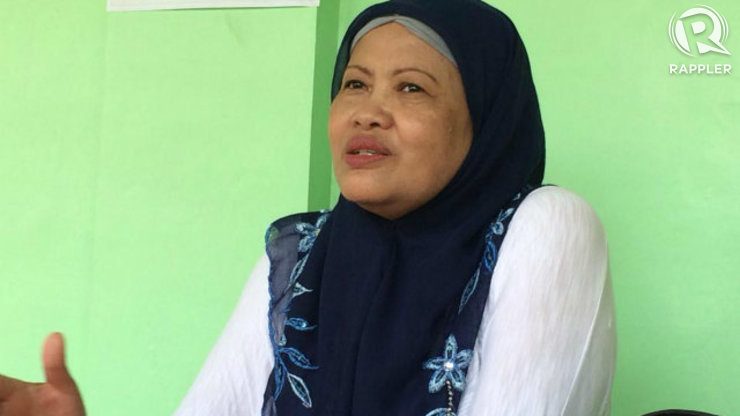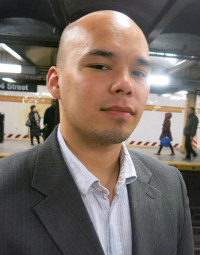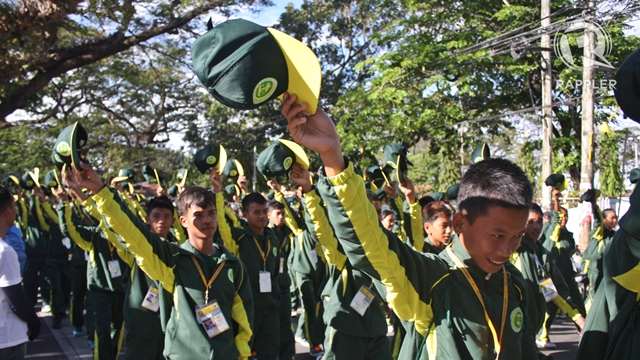SUMMARY
This is AI generated summarization, which may have errors. For context, always refer to the full article.

LAGUNA, Philippines – They are innocent children looking to show their athletic talents on the national stage. Yet to get to a playground from their homes they must dodge bullets from an insurgency that has gone on for four decades now – long before they were born.
They are the athletes of the Autonomous Region in Muslim Mindanao (ARMM) who have traveled to Laguna for the 57th Palarong Pambansa, which takes place from May 4-10.
They come from schools in war-torn provinces such as Maguindanao, Sulu and Basilan, where teachers and students had been killed, abducted and beheaded by extremist groups. For some students, sports offers a way out; for others sports is but a mere escape from the harsh realities of everyday life.
“You cannot go away from the fact that they came from the most remote areas, and that’s where the extremist groups are,” says Taya Katog-Aplal, director of the Bureau of Sports in ARMM. “Before it was Maguindanao, but it’s already at peace. But recently, we have Tipo-Tipo [in Basilan], but we don’t know the status. When we left, there was still an insurgency happening.”
“During emergency, we learn to find spaces and sanctuaries for children. We introduce athletics: ball games, running. From there, we take sports as stress debriefing, as much as conflict is concerned. They try to take part in sports as a form of stress relief and a form of psycho-social intervention.”
‘Key to peace’
There is a phenomenon that accompanies Palaro in ARMM. During Palarong Pambansa, the explosions and gun splatter stop and the streets are finally safe to walk. Insurgents rejoice in the streets alongside farmers and shop owners.
Katog-Aplal attributes it to regional pride.
“(Palarong Pambansa) is a key to peace and key to unity. One concrete example I can give you is in 2000, particularly in Sulu – that was my first administration – I moved the Palarong ARMM to Sulu. You know what Sulu is. And after more than 20 years, the people there did not experience walking in the street at midnight. When we came for Palaro, they rejoiced, all throughout the seven or ten days during night time, during daytime. There was no (unfortunate) circumstances that had happened.
“You can introduce unity because they love the future of their children. I have people tell this slogan: ‘Sports and arts silence the barrel of the gun.’”
Katog-Aplal has realistic expectations for this Palaro. Her region doesn’t have the money and infrastructure of the NCR and central Visayas, but they have heart and determination to fight for a better life, to show that they are the equals of their countrymen across the nation.
Just making it to Palaro is an achievement in itself, and the Games will give all participants an experience they will never forget. For some, the realization that the world is bigger than their hometowns is priceless in itself.
“Bringing our students out of the ARMM, out of the region is already part of the exposure that they cannot get in a classroom,” said Katog-Aplal. “There was an experience with our athletes, one time one elementary student saw a boat in the sea and asked ‘What is that?’ Out of the athletic competition, we had exposed the students to what a barko (ship) is, we have exposed them on ‘that is Manila,’ we have exposed them how developed these places are.”
Tough battle
Katog-Aplal, herself a former Palaro competitor, is a firm believer in the saving power of sports. But just getting there is a battle in itself.
The Department of Education has footed the bill for the 440 athletes, trainers and chaperones, plus 70+ support staff that traveled with them. Due to geographical difficulties, the teams hadn’t been able to practice together until they arrived in Laguna on April 17, giving them only two weeks to prepare. Most other regions have been training together for up to 3 months.
These difficulties have hurt the ARMM’s competitive chances, earning them the third-lowest tally of 16 medals at last year’s Palaro (compared with 279 from overall winners NCR), and were one of only two regions that didn’t win a single gold.
Back home, the lone sports complex in the region is located in Sulu, but has been poorly maintained. Without a competition-sized pool in working order, the swimming team practices in rivers and the Sulu Sea.
Upon arriving in Laguna on April 17, the team found few facilities to train at the Santisima Elementary School, where the teams both sleep and practice.
“It is also a sad experience in as much as the courts is concerned,” said Katog-Aplal. “The first, second, third and fourth days we are like rats, looking where to play because our sports complex is not yet ready to be used when we arrived here.”
The ping pong table is located in one of the classrooms, and at night serves as a bed for athletes.
“The only sports court that we have available is the badminton which is rectified.
“Besides we have another problem on where to play because look at the developing facilities that we have. I believe this is for academic purposes, not for sports.”
Individual competitions are far easier to find space to train for, and taekwondo, arnis and athletics remain their best shots for medals.
But they’ve overcome far greater than a lack of volleyball court.
“That is what I am very honored to tell you. They are very resourceful,” said Katog-Aplal, who has coordinated with the local government in Laguna to arrange for the use of volleyball and basketball courts in the province. The brother of Governor E.R. Ejercito had allowed some of the swimmers to use his pool so that they could practice in conditions similar to those they will compete in, she says.
“Relating themselves outside of ARMM is already a great privilege for us,” she added. – Rappler.com

Ryan Songalia is the sports editor of Rappler, a member of the Boxing Writers Association of America (BWAA) and a contributor to The Ring magazine. He can be reached at ryan@ryansongalia.com. An archive of his work can be found at ryansongalia.com. Follow him on Twitter: @RyanSongalia.
Add a comment
How does this make you feel?






There are no comments yet. Add your comment to start the conversation.